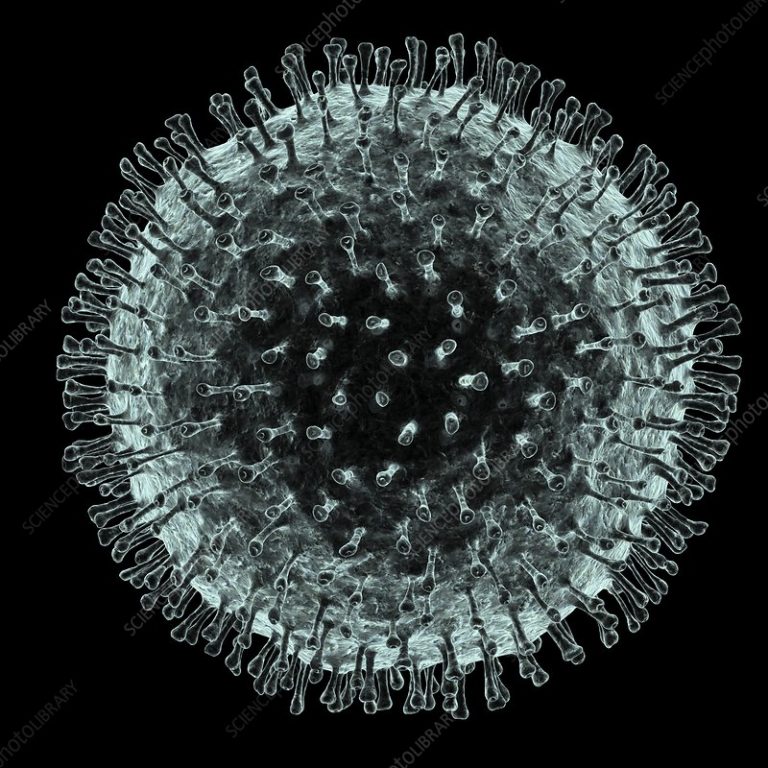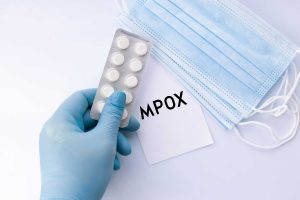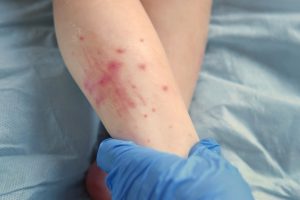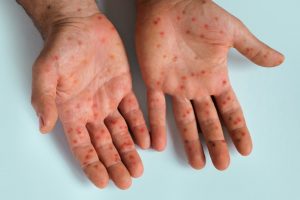On the 31 December 2019, the World Health Organization (WHO) China country office reported a cluster of pneumonia cases in Wuhan City, Hubei Province of China (1). On 7 January 2020, the causative pathogen was identified as a novel coronavirus (2019-nCoV) (2,3). There is currently limited epidemiologic data available of the ages and characteristics of affected cases. Person-to-person transmission has not yet been demonstrated (2,3). The majority of the cases were epidemiologically linked to seafood, poultry and live wildlife market (Huanan Seafood Wholesale Market) in Jianghan District of Hubei Province (1,2). This suggests that the novel coronavirus has a possible zoonotic origin (2). Most of the cases are currently experiencing mild to moderate symptoms. On 12 January 2020, there were 41 confirmed cases of 2019-nCoV associated pneumonia (4). Among these 41 confirmed cases, 14 cases had known clinical status with 6 patients (14.6%, 6/41) hospitalised and discharged, 7 patients (17.1%, 7/41) are currently still hospitalised and in a severe critical condition and 1 patient (2.4%; 1/41) with an underlying health condition died (4). On 13 January 2020, Thai officials reported 1 laboratory-confirmed exported case to Thailand in a Chinese traveller from Wuhan City. This patient did not visit the Huanan Seafood Wholesale Market but rather had visited another local fresh food markets in Wuhan, China (5,6). As of 16 January 2020, there are no infections identified among healthcare workers (4,7). Among the 41 confirmed 2019-nCoV cases, date of symptom onset for cases was from 8 December 2019 to 3 January 2020 (4). The risk of transmission remains low in South Africa as there is no evidence of human-to-human transmission or spread to healthcare workers.
Clinical presentation and case management
Since this novel coronavirus has only been recently identified, there is limited information regarding the mode/s of transmission, clinical features, and severity of disease at this stage. The main clinical signs and symptoms are fever and cough with a few patients presenting with difficulty in breathing and bilateral infiltrates on chest X-rays. Treatment is supportive as no specific therapy has been shown to be effective.
Case definitions for suspected infection with 2019-nCoV
The following people should be investigated and tested for the 2019-nCoV:
- Severe illness
Any person with a severe acute respiratory illness (SARI), presenting i.e. fever (≥38°C) or history of fever and cough with pneumonia or Acute Respiratory Distress Syndrome (ARDS) (based on clinical/ radiological findings) requiring admission to hospital and any of the following:
- A documented travel history to Wuhan, Hubei Province China within 14 days before symptom onset; or
- Close physical contact with a confirmed patient with 2019-nCoV while he/she is symptomatic*; or
- Patient is a healthcare worker who was exposed to patients with severe acute respiratory infections unless another aetiology has been identified to explain the clinical presentation
or,
- Respiratory illness of any severity
A person with acute respiratory illness (ARI) of any severity who presented with symptom onset within 14 days and had been exposed to the following:
- Close physical contact with a confirmed patient with 2019-nCoV while he/she is symptomatic*; or
- Healthcare facility in a country where hospital-associated 2019-nCoV infections have been reported; or
- Any direct contact with animal source in countries where 2019-nCoV is known or where human infections have occurred (due to the animal source remaining undetermined, guidance for this point will be updated) **; or
- A documented travel history to Wuhan, Hubei Province China within 14 days of symptom onset; and had visited an animal market in Wuhan City
* Close contact is defined as: healthcare-associated exposure, including providing direct care for nCoV patients, working with healthcare workers infected with nCoV, visiting patients or staying in the same close environment of a nCoV patient. This could also be defined as a healthcare worker working together in close proximity, sharing the same classroom environment with a nCoV patient, travelling together with nCoV patient in any kind of conveyance or living in the same household as a nCoV patient.
** To be added once/if animal source is identified as a source of infection
Clinicians should also be vigilant for the possibility of atypical clinical presentations among immunocompromised patients (8).
Specimen collection and transport:
The primary specimens for diagnosis are respiratory samples preferably from the lower respiratory tract. Respiratory specimens (combined nasopharyngeal and oropharyngeal swabs, and aspirates) should be collected using a universal transport medium from patients meeting the above case definitions. Sputum and/or endotracheal aspirates or bronchoalveolar lavage should be collected from patients with more severe respiratory disease. Collection of serum using serum separator tubes (adults: collect 3-5 ml whole blood) from all suspected patients may be useful for potential serological testing. Swabs and transport medium can be obtained from your local laboratory. The specimen should immediately be transported on ice to the laboratory for testing (9). The specimen should be clearly labelled: ARI of unknown aetiology.
Case notification:
All suspected cases who meet the case definition should be notified urgently to the district or provincial communicable disease co-ordinators (CDCCs) as per notifiable medical condition notification procedures. This is classified as Class 1 notifiable medical condition under “Respiratory Disease caused by a novel respiratory pathogen”, therefore, notification should be made immediately on identification of a case meeting case definition of suspected infection with novel coronavirus, a cluster of cases with severe respiratory illness with evidence of common exposure or epidemiologic link, or on receipt of a laboratory diagnosis of the novel respiratory pathogen. More details can be found on https://www.nicd.ac.za/wp-content/uploads/2019/05/NMC-case-definitions-FLIPCHART_v4_May-2019.pdf. Furthermore, CDCCs are to contact the National Institute for Communicable Diseases (NICD) in return. In the event of a confirmed case, contact tracing will be conducted.
For laboratory staff:
Please redirect any suspected specimens of nCoV-2019 from patients who met the above case definition to Centre for Respiratory Diseases and Meningitis (CRDM), NICD for identification/ confirmation and further characterisation. Please include the original specimen/s (swab or tissue) for PCR testing.
Precautions and infection, prevention and control considerations
At present, no vaccine is available for 2019-nCoV. So far there has been no confirmed person-person spread and no healthcare workers have been infected with the 2019-nCoV from China (8). However, travellers to Wuhan, China should avoid contact with animals and are encouraged to practice good hand hygiene and cough etiquette in order to reduce the risk of infection with respiratory viruses. Clinicians are to exercise preventative measures when managing symptomatic patients with a travel history to Wuhan City although transmissibility has not yet been determined. The following preventative measures should be practised.
- Patients who meet the suspected case definition are advised to wear a surgical mask as soon as they are identified and should be evaluated in a private room with the door closed (8).
- Healthcare providers should practice contact precautions such as wearing an N95 disposable respirator and use eye protection (8).
- For patients who have been hospitalised for inpatient care, contact and airborne isolation precautions, in addition to standard precautions, are to be implemented until further information becomes available (8).
- Patients who are ill and do not require hospitalisation may be cared for and isolated in their home while being evaluated for 2019-nCoV infection. Isolation is defined as the separation or restriction of activities of an ill person with a contagious disease from those who are well.
No travel or trade restrictions with China have been recommended by WHO (2).
Contact details:
Suspected cases should be discussed with CRDM, NICD of the National Health Laboratory Service (NHLS), through the NICD Hot Line number 082 883 9920.
For any additional laboratory support that is needed, please contact Linda de Gouveia on 011 555 0327 or lindad@nicd.ac.za, or Mignon du Plessis on 011 555 0387 or mignond@nicd.ac.za at the CRDM, NICD. Please find the link to the special request form as follows: https://www.nicd.ac.za/wp-content/uploads/2019/09/CRDM-specimen-submission-form-v2_13-Sep-2019.pdf
References:
- World Health Organization. Pneumonia of unknown cause – China [Internet]. 2020 [cited 2020 Jan 12]. Available from: https://www.who.int/csr/don/05-january-2020-pneumonia-of-unkown-cause-china/en/
- Centers for Disease Control and Prevention. Novel coronavirus 2019, Wuhan, China [Internet]. 2020 [cited 2020 Jan 12]. Available from: https://www.cdc.gov/coronavirus/novel-coronavirus-2019.html
- World Health Organization. WHO Statement Regarding Cluster of Pneumonia Cases in Wuhan, China [Internet]. 2020 [cited 2020 Jan 12]. Available from: https://www.who.int/china/news/detail/09-01-2020-who-statement-regarding-cluster-of-pneumonia-cases-in-wuhan-china
- World Health Organization. Novel Coronavirus – China [Internet]. World Health Organization; 2020 [cited 2020 Jan 13]. Available from: https://www.who.int/csr/don/12-january-2020-novel-coronavirus-china/en/
- World Health Organization. WHO statement on novel coronavirus in Thailand [Internet]. 2020 [cited 2020 Jan 14]. Available from: https://www.who.int/news-room/detail/13-01-2020-who-statement-on-novel-coronavirus-in-thailand
- Centers for Disease Control and Prevention. Novel Coronavirus 2019 (nCoV-2019), Wuhan, China [Internet]. 2020 [cited 2020 Jan 14]. Available from: https://www.cdc.gov/coronavirus/novel-coronavirus-2019.html
- Center for Infectious Disease Research and Policy. China releases genetic data on new coronavirus, now deadly [Internet]. 2020 [cited 2020 Jan 12]. Available from: http://www.cidrap.umn.edu/news-perspective/2020/01/china-releases-genetic-data-new-coronavirus-now-deadly
- World Health Organization. Surveillance case definitions for human infection with novel coronavirus (nCoV) [Internet]. 2020 [cited 2020 Jan 15]. Available from: https://www.who.int/publications-detail/surveillance-case-definitions-for-human-infection-with-novel-coronavirus-(ncov)
- World Health Organization. Laboratory testing for 2019 novel coronavirus (2019-nCoV) in suspected human cases [Internet]. 2020 [cited 2020 Jan 15]. Available from: https://www.who.int/docs/default-source/coronaviruse/20200114-interim-laboratory-guidance-version.pdf?sfvrsn=6967c39b_4





